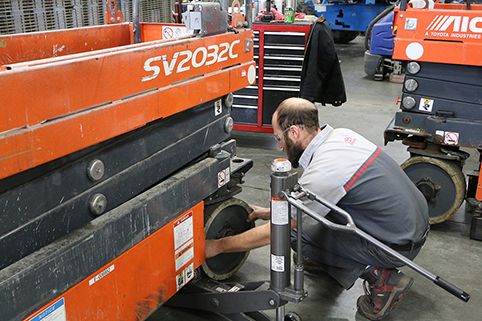How Lift Maintenance London Sticks Out Among Local Lift Repair Companies
How Lift Maintenance London Sticks Out Among Local Lift Repair Companies
Blog Article
Comprehensive Guide to Lift Solutions and Their Upkeep
Browsing the complex world of lift systems and their maintenance is a task that requires precision and understanding. From the various types of lift systems in use to the thorough adherence to security laws, the upkeep of these vertical transport devices is a diverse undertaking.
Kinds Of Elevator Equipments
The most usual kinds include hydraulic elevators, traction elevators, machine-room-less elevators, and vacuum cleaner lifts. Hydraulic lifts are ideal for low-rise structures and make use of a hydraulic piston to relocate the elevator car. Machine-room-less elevators are a space-saving choice as they do not need a separate device room for the elevator equipment.
Each kind of elevator system has its own benefits and disadvantages, making it crucial for structure owners and developers to thoroughly consider their particular needs prior to choosing the most suitable option. Factors such as constructing elevation, area accessibility, energy effectiveness, and budget constraints all play a substantial function in identifying the most effective elevator system for a certain structure.
Common Upkeep Issues
Normal upkeep of lift systems is crucial to ensure smooth procedure and lengthen their life-span. Despite regular maintenance, lift systems can still run into usual upkeep problems that need to be quickly addressed to prevent disruptions in solution. Routine assessments and positive maintenance can aid recognize and settle these typical maintenance issues prior to they rise and influence the total efficiency of the elevator system.
Safety Rules and Conformity
Following stringent safety and security laws and ensuring conformity with sector requirements are extremely important for maintaining the operational stability of elevator systems. Elevators are subject to a comprehensive collection of safety regulations to protect travelers, upkeep personnel, and the public. Regulatory bodies such as the Occupational Safety and Wellness Administration (OSHA) in the United States and the European Lift Organization (ELA) in Europe develop guidelines that cover numerous facets of elevator style, upkeep, operation, and installment.
Compliance with these guidelines is not just a lawful demand yet additionally an ethical commitment for structure proprietors and lift upkeep firms. Normal inspections, maintenance checks, and adherence to safety procedures described in the policies are necessary to make certain the reliable and secure procedure of lift systems.
Finest Practices for Upkeep

One more essential best practice is to promptly resolve any type of documented concerns or uncommon noises to avoid additional damage. Implementing a proactive technique to maintenance can conserve money and time in the future by avoiding pricey repair services or replacements. Building proprietors need to also take into consideration investing in modernization upgrades to enhance the efficiency and safety of their elevator systems. By complying with these best techniques, lift systems can operate smoothly and safely, supplying reputable upright transportation for occupants.

Advanced Technologies for Effectiveness
Carrying out advanced technologies in lift systems can considerably boost functional performance and guest experience. These systems enable passengers to my sources input their preferred floor prior to entering the lift, which then routes them to the most effective vehicle.
In addition, the combination of clever sensors and predictive upkeep capabilities has actually revolutionized elevator maintenance. These sensors can detect possible issues prior to they escalate, making it possible for positive upkeep interventions and decreasing downtime. Additionally, making use of energy-efficient components and regenerative drives helps decrease power intake and operating costs in lift systems.
Furthermore, the application of cloud-based surveillance and remote diagnostics enables real-time monitoring of lift performance and instant troubleshooting of any type of malfunctions. This aggressive method not only boosts system reliability but likewise boosts the overall user experience by making sure smooth and undisturbed elevator operations.
Final Thought
To conclude, recognizing the different kinds of elevator systems, typical upkeep problems, safety regulations, best upkeep methods, and progressed modern technologies for performance is crucial for guaranteeing the smooth operation of elevators. By adhering to safety policies and carrying out finest methods for maintenance, building owners can extend the life expectancy of their elevator systems and make sure the safety visit the website of travelers. It is necessary to remain upgraded on the most recent innovations in lift innovation to enhance effectiveness and dependability.
The most common types consist of hydraulic lifts, traction elevators, machine-room-less lifts, and vacuum cleaner lifts. Hydraulic elevators are optimal for low-rise buildings and use a hydraulic pop over here piston to relocate the lift automobile. Machine-room-less elevators are a space-saving option as they do not call for a separate device space for the elevator machinery. Normal assessments and positive maintenance can aid determine and fix these common upkeep problems before they rise and affect the overall performance of the elevator system.

Report this page